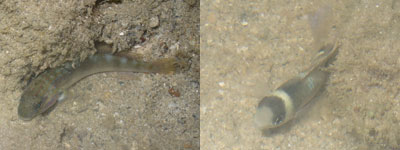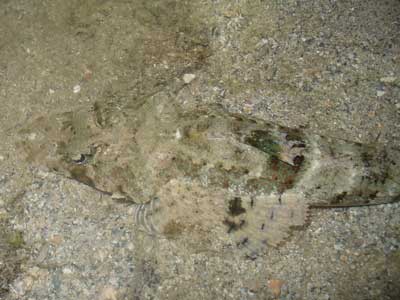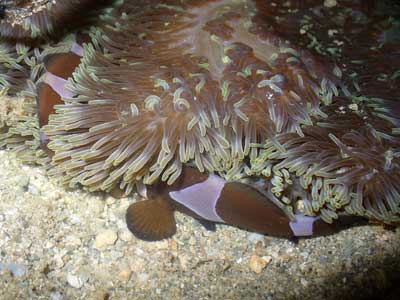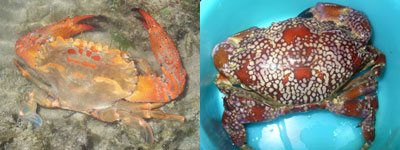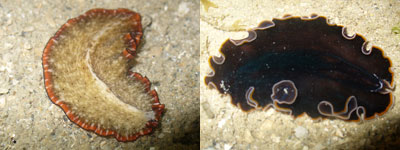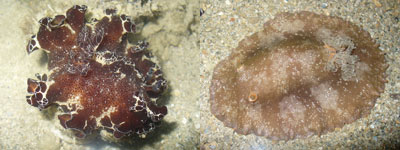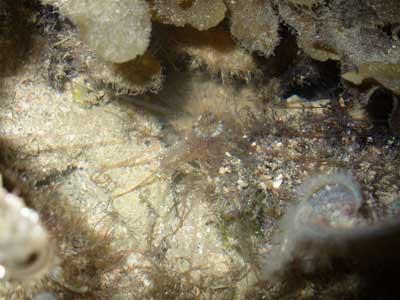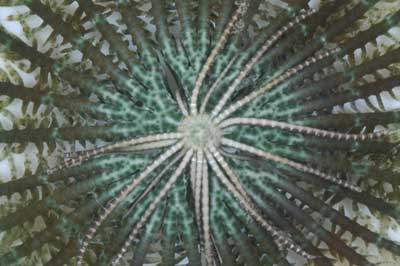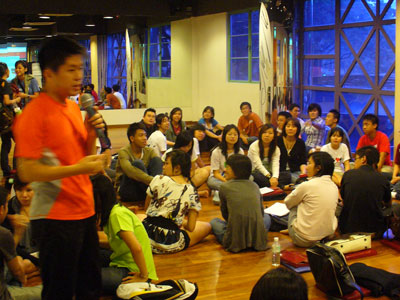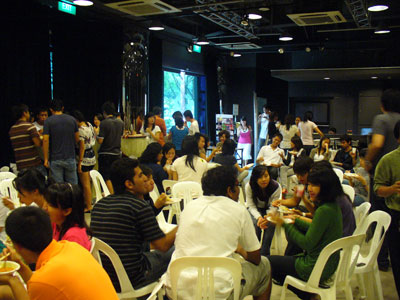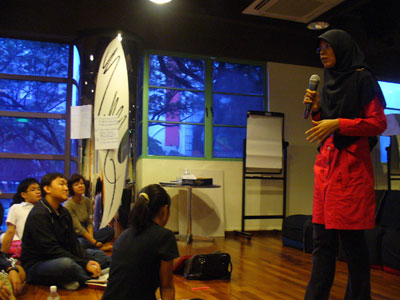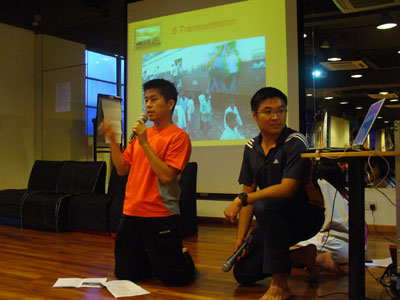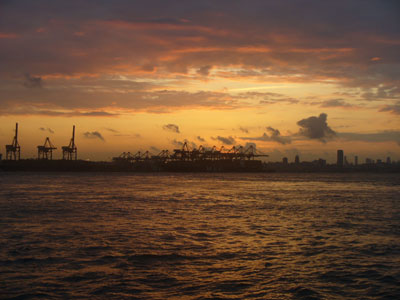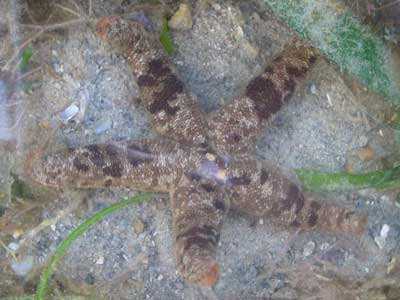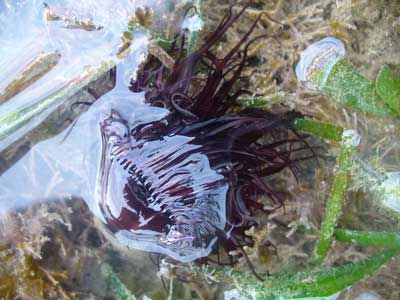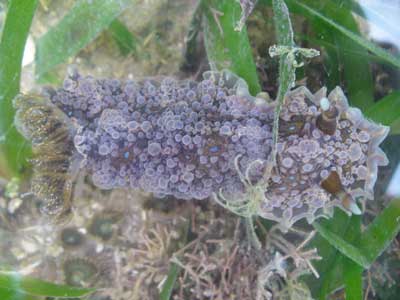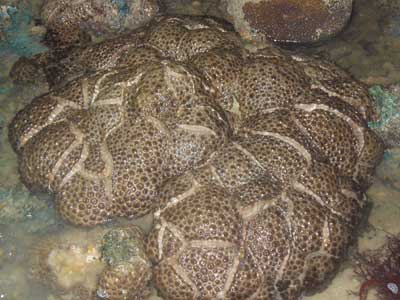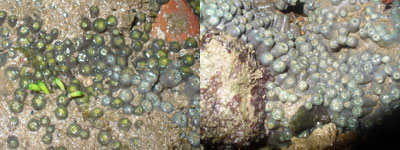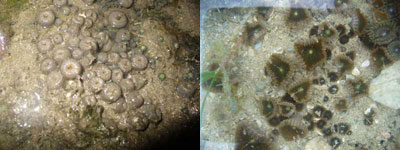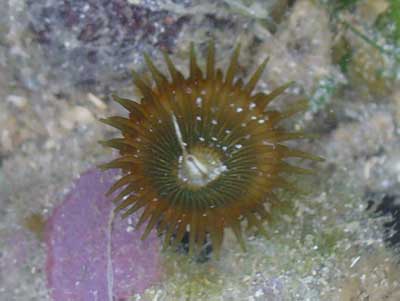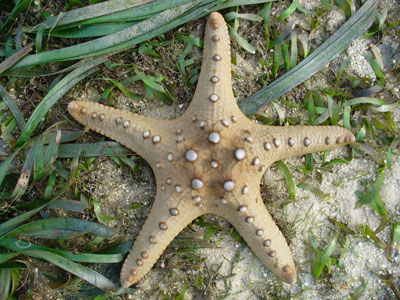Having to wake up at what my colleague calls ungodly hours to do crazy things for crazy stuff, that's what a bunch of us did - all for the sake of zoanthids. Roaming around in the darkness when most
Homo sapiens in the right mind would be tucked nicely in bed, we ventured four shores (Kusu, Hantu, Changi & Cyrene) in four days.
Here is to show the stuff that also do not sleep at ungodly hours, or simply those I-can't-move-or-run-so-I've-no-choice-if-you-disturb-me kind.
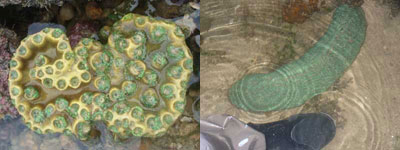
Corals are plentiful, but these are rather interesting.
Turbinaria sp. (left) found at Cyrene, with an interesting yellow calcium carbonate skeleton and possibly a
Ctenactis sp. at Hantu, that has grown to humongous proportion (about 2 feet in length).

Octopus (Order Octopoda)- one of those night critters...
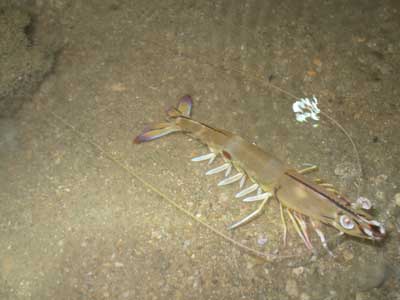
Quite a huge prawn (Order Decapoda). Seafood anyone?

A long ribbon worm (Phylum Nemertea) that perhaps went back to sleep when it knows we were here.

A large
Metopograpsus sp. crab wandering around a pillar of the jetty at Kusu.
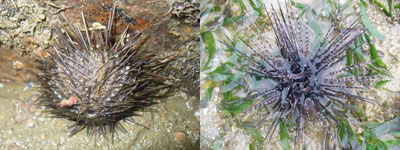
Some
Temnopleurus sp. (left) found at Changi, along with quite a handful of
Diadema setosum found on Cyrene and Hantu.
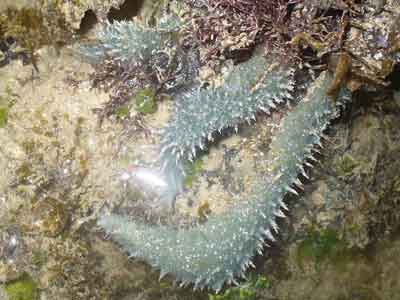
Interesting looking sponge (Phylum Porifera) found in Hantu.
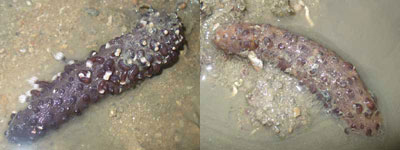
A couple of interesting looking soft corals (Order Alcyonacea) found at Changi. Looks like.... you-know-what....

Seafans (Order Gorgonacea) or gorgonians found at Changi. Quite a bunch of them around.

Seafans-look-alike, but boy... you don't want to mess with these... Hydroids (Order Hydrozoa) will give you hell of a time if you touch them.

Of course, there were the usual Knobblies (Protoreaster nodusus) at Cyrene. Well they now have a whole
blog to themselves so here's the others - (left) a baby Cushion seastar (
Culcita novaeguinea) from Cyrene and a Crown seastar (
Asterina coronata) or rock star (imagine finding a guitar when you flip it over! Okay... lame.. but this is what we strive on at 2 or 3am in the morning) from Changi.
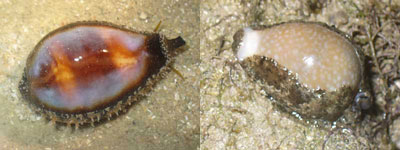
Cowries!
Cypraea onyx (left) and
Cypraea miliaris from Kusu. Aren't they beautiful with their mantle and foot extended?
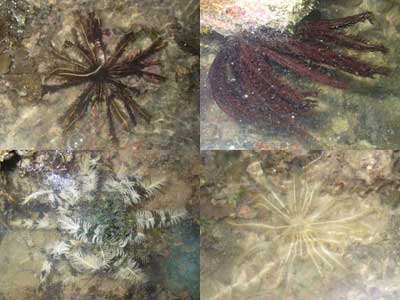
Crinoids (Class Crinoidea) or feather stars seems to be in season. Seen more than two dozen of them across the four days. They come in such wide variety of colours that sometimes I wonder are they just colour morphs of only a few species. Well, let's wait for a crinoid expert to descend upon Singapore. Hehe...

Here's another crinoid. But if you notice carefully, there a Toadfish (Family Batrachoididae) right under it.
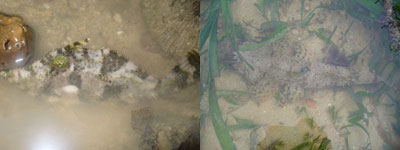
So now for more fishy stuff, (left) a Filefish (Family Monocanthidae) from Hantu and a Flathead (Family Platycephalidae) from Cyrene.
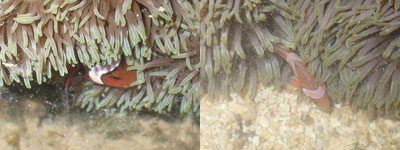
Seen the most numbers of nemos during this period, more than I've ever seen before. Hiding among anemones, these
Amphiprion ocellaris were seen in Kusu, Hantu and Cyrene.

Interesting fishes that swims vertically are these Razorfish (Family Centriscidae) seen at Cyrene. Notice that their fins are modified to be extended throughout the underside of their body so that they can swim vertically easily. Cool eh? An adaptation to live among seagrass lagoons.
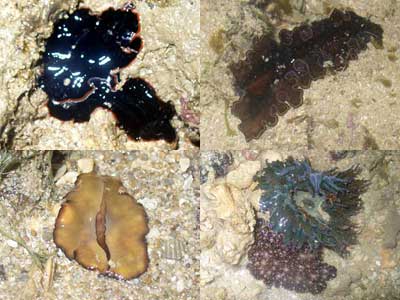
Flatworms!! Not sure about the top two's (from Kusu) ID, but bottom left is a
Pseudobiceros gratus from Cyrene and
Acanthozoon sp. (bottom right) seen in Hantu and Cyrene. A Flower anemone (
Phymanthus sp.) is seen in the photo with the
Acanthozoon sp.. These anemones come in different colours and are commonly seen.

Oh boy... I always do this. I'm not a nudibranch expert but I simply love them so I keep the best for last. From top, clockwise:
Glossodoris atromarginata (Cyrene), probably a
Hypselodoris infucata (Changi), two Phyllids, probably
Phyllidiella pustulosa (Hantu, Cyrene) and Pteraeolidia ianthina (Cyrene). Didn't take a photo of
Jorunna funebris thou.
End of the trips = sleepy, tired, hungry always, but all worthwhile! Can't wait for the next researcher to come. Hahahaha...

